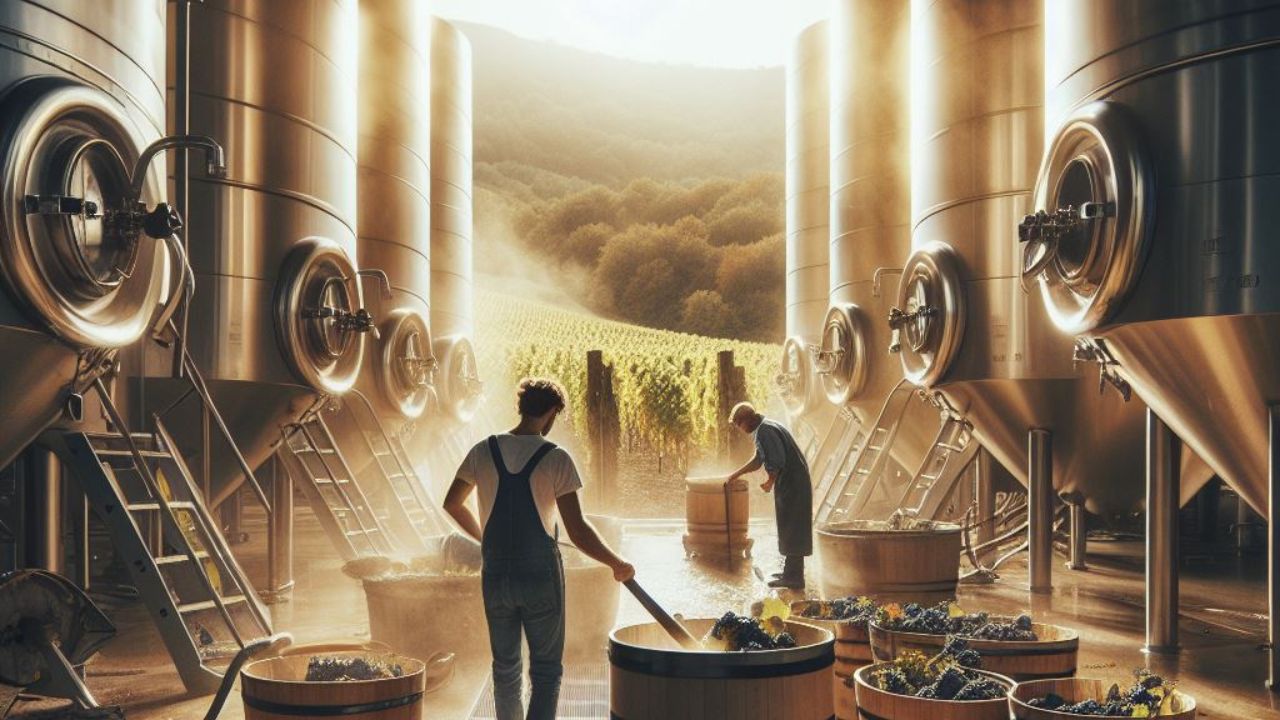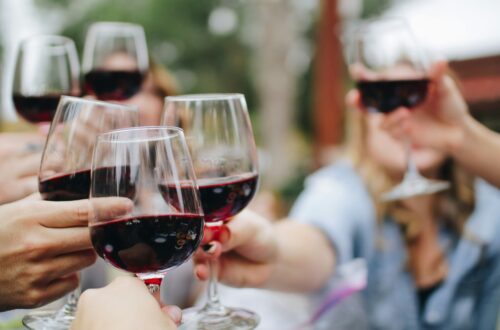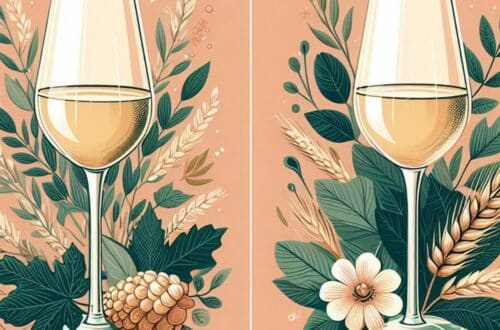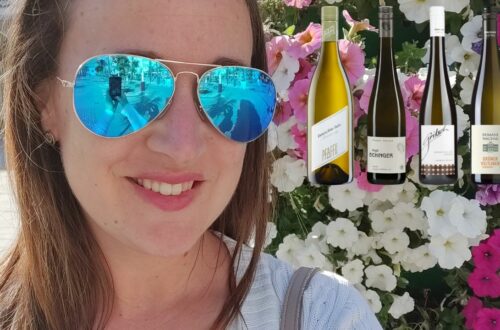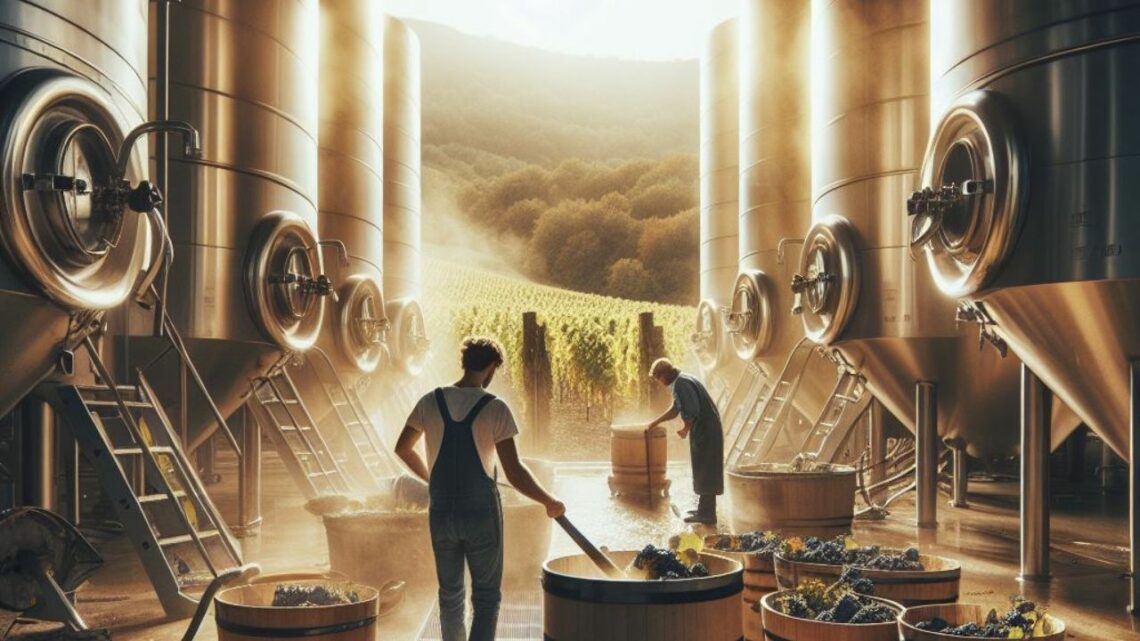
Blaufränkisch Winemaking Traditions In Burgenland
You know I love Blaufränkisch and even more Blaufränkisch from Burgenland. If you haven’t tasted it already, I really urge you to do so and hopefully you’ll fall in love with it, just like I did.
If not…try again!
Anyway, let’s learn why, how, what makes Blaufränkisch so good. What are the secrets winemakers use to make our favourite wine?
If you’re new to my blog, you can read all about Burgenland here. (quick tip : Burgenland is a wine region in Austria that lies east of Austria)
For generations, Blaufränkisch, or “Austria’s Blue Gem” as some call it has been the lifeblood of Burgenland’s winemaking tradition.
Let’s find out what the Blaufränkisch winemaking traditions in Burgenland are!
Historical Roots of Winemaking in Burgenland
If you want to know all about the history of wine in Austria, I recommend you check out this post.
The historical origins of winemaking in Burgenland date back to the Romans, who planted vines in the region over 2,000 years ago.
Winemaking continued to flourish under the Celts and the Huns, and in the Middle Ages, monasteries played a major role in introducing new grape varieties and winemaking techniques.
During the Ottoman conquest of Hungary in the 16th century, winemaking declined in the region, but revived in the 18th century after Burgenland became part of the Austrian Empire.
The 19th century saw a period of rapid economic growth and increased demand for wine, which led to a flourishing wine industry in Burgenland.
The 20th century was marked by both World War I and World War II, but winemaking continued to grow after the wars.
In the 1970s and 1980s, there was a revolution in Austrian winemaking, with Burgenland at the forefront. Winemakers began to focus on quality over quantity, and they adopted new grape varieties and winemaking techniques.
Today, Burgenland is one of the most important wine regions in Austria, and it is known for its high-quality Blaufränkisch wines.
The region’s winemaking traditions have played a significant role in shaping its viticulture, with a focus on sustainable practices and the use of traditional winemaking techniques, such as :
- Use of open fermentation tanks: Open fermentation tanks allow for more oxygen exposure, which can lead to more complex and flavorful wines. This is a traditional winemaking practice that is still followed by many wineries in Burgenland.
- Use of large oak barrels: Large oak barrels impart their own unique flavors and aromas to the wine, which can enhance the wine’s complexity and structure. This is another traditional winemaking practice that is common in Burgenland.
- Focus on sustainable viticulture: Many wineries in Burgenland are committed to sustainable viticulture, which involves using practices that minimize the impact on the environment. This includes practices such as cover cropping, composting, and integrated pest management.
The traditional winemaking practices of Burgenland have influenced the style of Blaufränkisch from the region in a number of ways. But we’ll come back to that later.
Let’s talk about how Blaufränkisch is at its core first.
The Unique Characteristics of Burgenland Blaufränkisch
Blaufränkisch wines usually have rich fruit flavors (black cherry, plum), spiciness (black pepper, clove), high acidity, and moderate to high tannins.
These wines age well, with tannins softening over time.
However, Burgenland is known for its diverse terroir. The impact of soil and climate can really change the taste of Blaufränkisch wines.
For instance, soil variations range from limestone-rich to clay or sandy, impacting taste—limestone for minerality, clay for full-bodied wines, and sandy for lighter-bodied with vibrant red fruit.
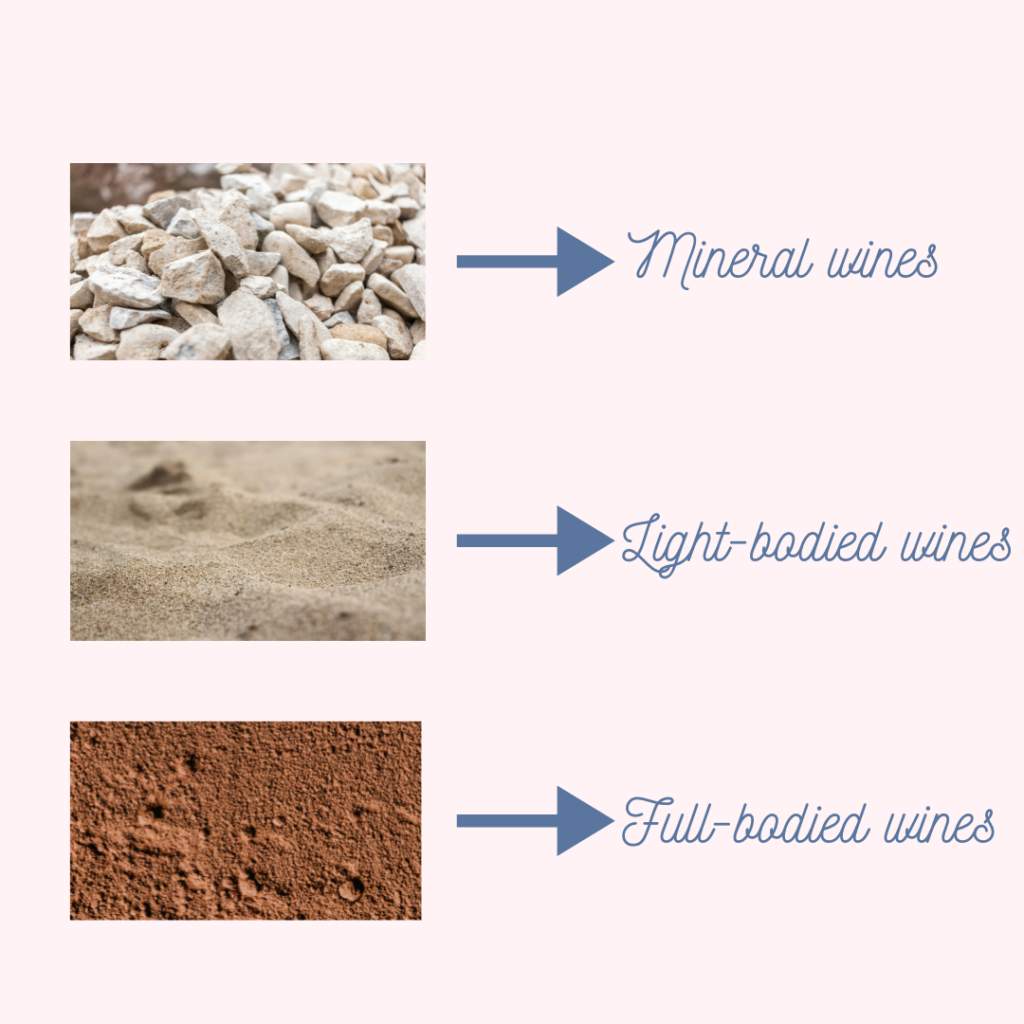
Climate varies across regions, with the north cooler and the south warmer.
Altitude affects acidity and fruit flavors.
For instance, regions like Leithaberg (northern, limestone) produce slow-ripened, intricate Blaufränkisch, while Neusiedlersee (eastern, sandy) yields early-ripened, elegant wines.
Mittelburgenland (central, clay) offers full-bodied, spicy blends, and Eisenberg (southern, volcanic) creates elegant, lighter-bodied wines.
Rosalia (southern, gneiss) produces full-bodied, mineral-rich, fruity wines.
So the impact of the growing of the grape is undeniable however Blaufränkisch’s versatility is also due to winemaking techniques.
For instance, whole-cluster fermentation results in structured, tannic wines, while destemmed grapes create fruit-forward, approachable ones.
Maceration duration also influences flavor intensity, with longer times producing bolder flavors.
Traditional Blaufränkisch Winemaking Techniques
Blaufränkisch is a grape variety that is known for its versatility, and it can be made in a variety of styles like we just saw above.
However, traditional Blaufränkisch winemaking techniques in Burgenland tend to produce wines that are bold, complex, and elegant.
One of the most important aspects of traditional Blaufränkisch winemaking is the use of open fermentation tanks.
Open fermentation tanks allow for more oxygen exposure, which can lead to more complex and flavorful wines.
Roland Velich, the owner and winemaker of Weingut Moric, one of my favourite wineries by the way, is renowned for his dedication to making terroir-driven wines. He’s the best example if you really want to taste the impact terroir has on Blaufränkisch. Moric specializes in producing single-vineyard Blaufränkisch wines from old vines in the Mittelburgenland region.
In the cellar, Velich often utilizes open fermentation tanks for his Blaufränkisch production. For him, open fermentation allows for greater control over the winemaking process, including temperature management and extraction of flavors and tannins from the grape skins.
It also encourages gentle extraction, promoting the development of complex aromas and flavors while maintaining the wine’s freshness and purity.
Additionally, many Burgenland winemakers use whole-cluster fermentation for Blaufränkisch. Whole-cluster fermentation can add additional tannins and structure to the wine.
One example of a Blaufränkisch producer in Burgenland who employs whole-cluster fermentation is Weingut Pittnauer. This family-owned winery, located in Gols, is known for its commitment to organic and biodynamic farming practices.
Gerhard Pittnauer, the winemaker, believes in minimal intervention winemaking techniques to showcase the unique characteristics of the grape and terroir. For some of their Blaufränkisch wines, they opt for whole-cluster fermentation, where the grapes are not destemmed before fermentation. This method can add complexity to the wine, including spice and floral notes, as well as contribute to the overall structure.
By utilizing whole-cluster fermentation, Weingut Pittnauer aims to produce wines that express the true essence of the Blaufränkisch grape and the terroir of Burgenland.
Traditionally, Blaufränkisch wines in Burgenland are aged in large oak barrels. Oak barrels impart their own unique flavors and aromas to the wine, which can enhance the wine’s complexity and structure.
The length of aging varies depending on the style of wine being produced, but many Burgenland winemakers age their Blaufränkisch wines for several years in oak barrels.
Located in the town of Gols, Claus Preisinger is also known for his commitment to organic and biodynamic farming practices.
Preisinger often ages his Blaufränkisch wines in large oak barrels, also known as “fuder” in German. These barrels typically have a capacity of around 1,000 liters or more. Aging in large oak barrels allows for a slower and more gradual integration of oak flavors, resulting in wines with subtler oak influence compared to smaller barrels.
By choosing large oak barrels for aging, Claus Preisinger aims to preserve the purity of the Blaufränkisch grape and highlight the natural characteristics of the wine, while still imparting complexity and structure through oak aging. This approach results in Blaufränkisch wines that are elegant, balanced, and expressive of their terroir in Burgenland.
Blending is another important aspect of traditional Blaufränkisch winemaking in Burgenland.
Many winemakers blend Blaufränkisch with other grape varieties, such as Zweigelt, Merlot, and Cabernet Sauvignon. Blending can help to add complexity and balance to the wine.
Franz Weninger, the winemaker of Weingut Weninger, located in the Mittelburgenland region, comes from a long line of winemakers and has a deep understanding of the local grape varieties, including Blaufränkisch.
While Weninger produces single-varietal Blaufränkisch wines that showcase the individual characteristics of the grape, he also uses blending as a winemaking technique to create blends that highlight different aspects of Blaufränkisch. For example, he may blend Blaufränkisch with other local grape varieties such as Zweigelt or St. Laurent to add complexity and balance to the final wine.
By blending Blaufränkisch with other grape varieties, Weingut Weininger is able to create wines that are greater than the sum of their parts, combining the strengths of each grape variety to produce wines that are rich, complex, and expressive of the terroir of Burgenland.
Overall, the traditional Blaufränkisch winemaking techniques employed by Burgenland winemakers produce wines that are bold, complex, and elegant.
The Role of Oak Barrels in Blaufränkisch Aging
Let’s come back to oak barrels for a minute.
The origins of oak barrels can be traced back to ancient times, with evidence suggesting their use in wine storage and transportation as early as the Bronze Age.
However, it was the Gauls, a Celtic civilization inhabiting present-day France, who refined the art of barrel making, introducing techniques that are still used today
By definition, barrels, or casks, are essentially cylindrical containers crafted from wooden staves, typically oak, held together by metal hoops.
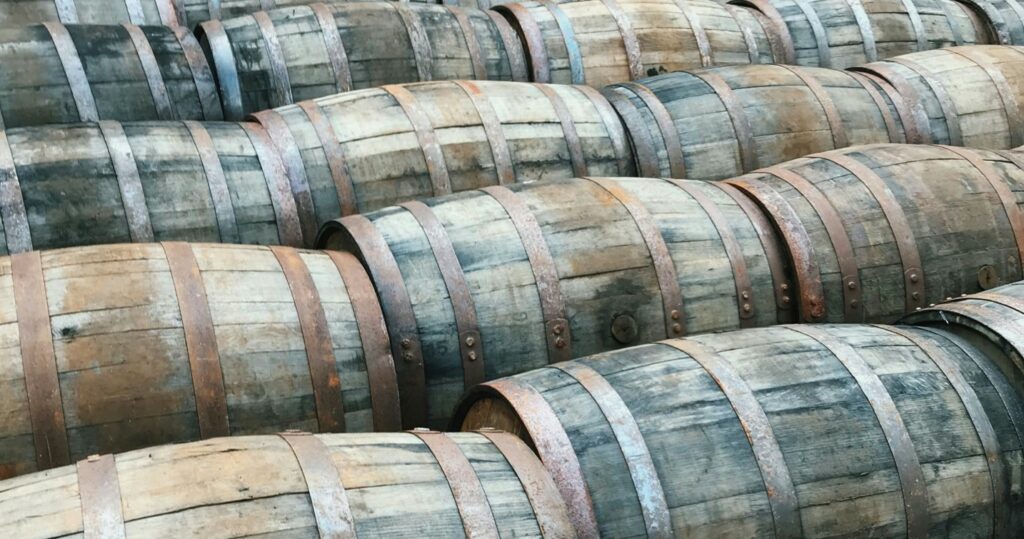
The process of barrel making involves meticulously selecting and shaping the staves, ensuring their precise fit to form the desired curvature.
The interior of the barrel is then toasted or charred, which will impart aromas and flavors to the wine by the way.
Before oak barrels, wine transportation was a difficult. It was usually transported in fragile clay amphorae which often broke during transit.
Oak barrels, with their sturdy construction and ability to withstand the rigors of travel, revolutionized the wine trade. Wines could be transported across vast distances safely and efficiently.
Beyond their role in transportation, oak barrels have now become an integral part of the winemaking process, imparting flavors, aromas, and structural elements to the wine.
Overall, oak’s magic lies in its ability to transform a simple grape juice into a complex and nuanced wine. Here’s how it impacts wine flavor, texture, and longevity:
- Flavor Profile: Oak is teaming with natural compounds such as lignin, vanillin, and lactones. During aging, wine slowly extracts these compounds, adding layers of flavor and aroma. Lignin, for instance, contributes to the wine’s structure and mouthfeel. Vanillin imparts vanilla notes, while lactones introduce soft, coconut-like flavors.
- Texture and Mouthfeel: Fine-grained oak imparts a smoother, silkier mouthfeel. The tannins in the wood bind with those in the wine, leading to a more integrated and refined structure. It smooths rough edges, harmonizes tannins, and rounds out the palate, resulting in a more balanced and enjoyable drinking experience.
- Longevity: Oak barrels provide a controlled environment for wine to mature gracefully. Oxygen slowly permeates the wood, facilitating subtle oxidation. This oxygen interaction softens tannins, rounds out sharp edges, and allows complex chemical reactions to unfold. The result is a wine that evolves, gaining complexity, depth, and the potential for extended aging.
The Role of Oak Varieties and Regions
The type of oak used significantly impacts the wine’s flavor and structure.
European oak, primarily sourced from French and Hungarian forests, is renowned for its elegance and subtlety.
Wines aged in French oak barrels often exhibit refined flavors of vanilla, baking spices, and a delicate structure.
Hungarian oak, less common but equally fascinating, can introduce notes of cloves and exotic spices.
American oak is synonymous with boldness and robustness. It imparts flavors of caramel, coconut, and dill, along with a more significant tannin presence.
Wines aged in American oak barrels tend to be more assertive, with a pronounced oak character.
Beyond European and American oak, winemakers also explore oak from various regions like Russian oak and Canadian oak.
Each oak variety introduces its own nuances, contributing to the diversity of wine styles.
Sustainability and Organic Practices
Integrated or sustainable viticulture is a holistic approach to grape cultivation.
The goal is to minimize the ecological impact of wine production while still producing high-quality wines. But, hey, the healthier the grape, the better the wine is, so it’s a win-win!
If you’re looking for those wines, don’t forget to check out the Organic Wine Club!
This strategy, grounded in prioritizing natural methods for pest and disease control, fostering plant growth, and sustaining soil health, utilizes various techniques:
- Cover Cropping:
Cultivating plants between vine rows enhances soil health, introduces organic matter, suppresses weeds, and mitigates erosion. Wines produced from grapes grown with cover crops often exhibit more complex flavors and aromas, including fruity, floral, and earthy notes. - Composting:
The breakdown of organic materials like grape skins, stems, and leaves into nutrient-rich soil amendments enhances soil fertility and reduces reliance on chemical fertilizers. - Biological Control:
This method involves using natural predators and parasites to manage pests. Sustainable practices, such as planting cover crops and encouraging native plants and wildlife, contribute to increased biodiversity in the vineyard. For example, employing ladybugs to control aphids is a common strategy. Biodiversity fosters a healthy ecosystem for vines and grapes, resulting in wines with more complex flavors and aromas, including spice, floral, and herbal notes. - Reduced Pesticide Use:
Integrated viticulturists resort to pesticides only as a last resort, opting for the least toxic options available. Sustainable practices like integrated pest management (IPM) help reduce the use of pesticides and herbicides. These chemicals, if overused, can mask the natural flavors and aromas of grapes. Wines made from grapes grown with fewer pesticides and herbicides tend to showcase more pure and expressive flavors and aromas.
Conclusion: Blaufränkisch winemaking traditions in Burgenland
Burgenland’s winemaking has deep roots, dating back over 2,000 years to Roman times. Despite setbacks during the Ottoman conquest, the region thrived in the 18th century under the Austrian Empire.
Monasteries in the Middle Ages played a role in introducing grape varieties and techniques. In the 1970s, Austrian winemaking, led by Burgenland, saw a quality-focused revolution.
Today, Burgenland stands as a vital Austrian wine region, famed for high-quality Blaufränkisch wines. Traditional practices shape its viticulture—open fermentation tanks, large oak barrels, and a focus on sustainable practices.
Blaufränkisch’s flavor profiles are as diverse as the terroir in Burgenland. Soil, climate, and altitude variations result in wines ranging from full-bodied and complex to lighter-bodied with vibrant red fruit.
Following the growing part, Blaufränkisch’s versatility also shines through Burgenland’s winemaking techniques. Open fermentation tanks, whole-cluster fermentation, large oak barrel aging, and blending contribute to bold, complex, and elegant wines.
So curious to discover these wines? Check out my post on where to buy Austrian wine online!




